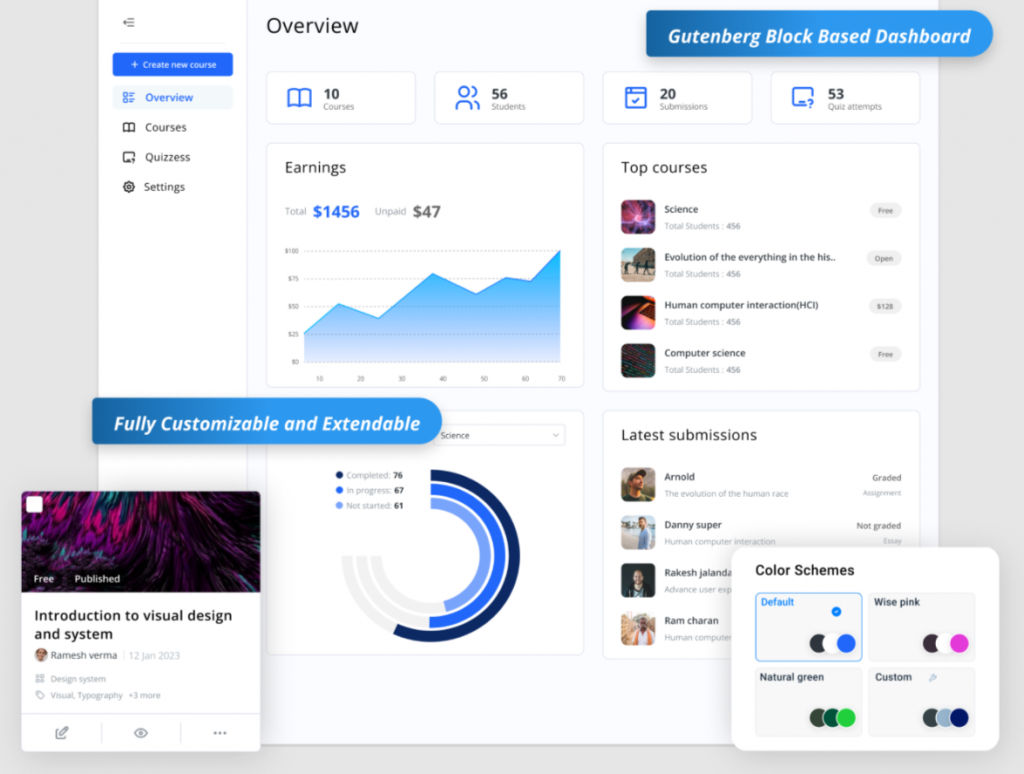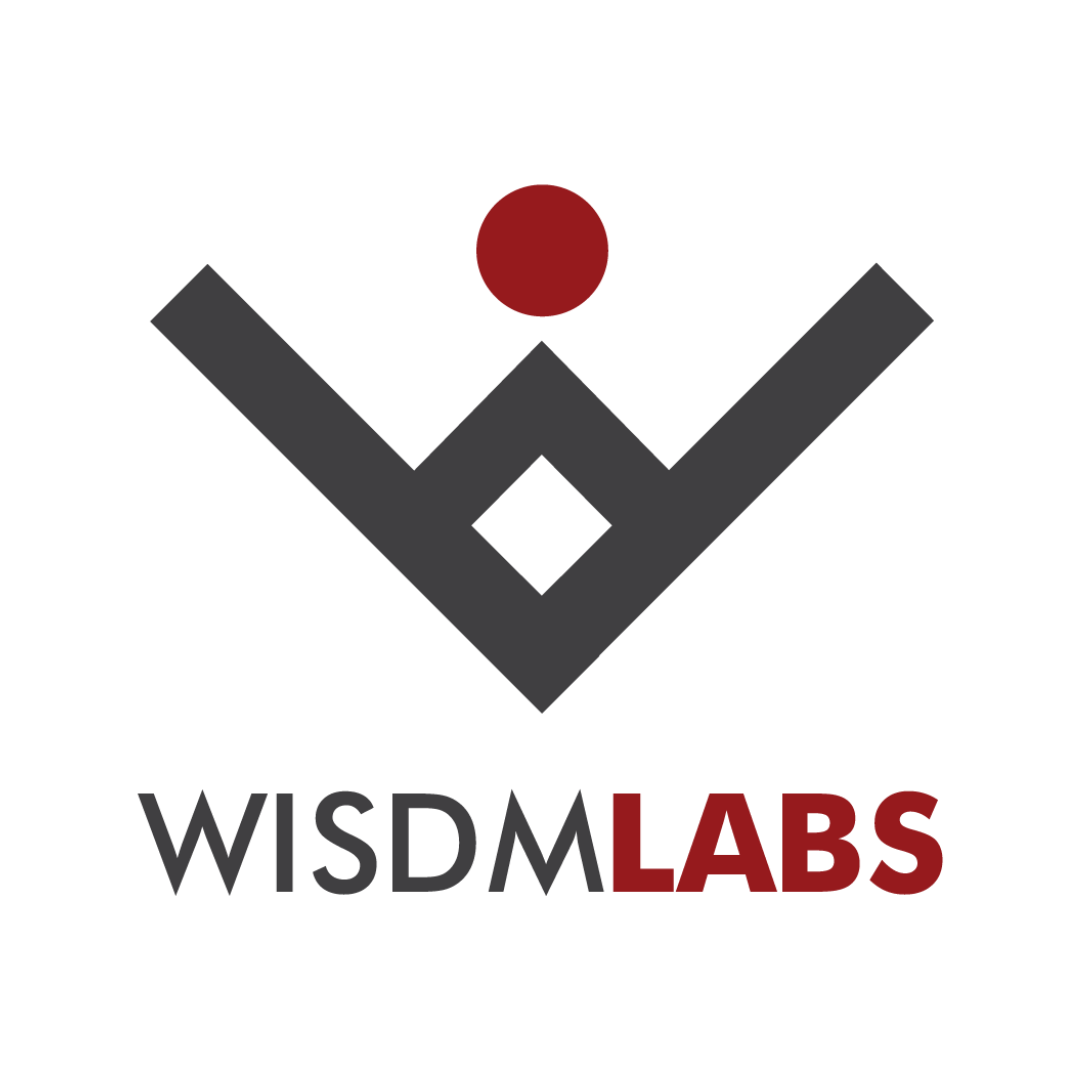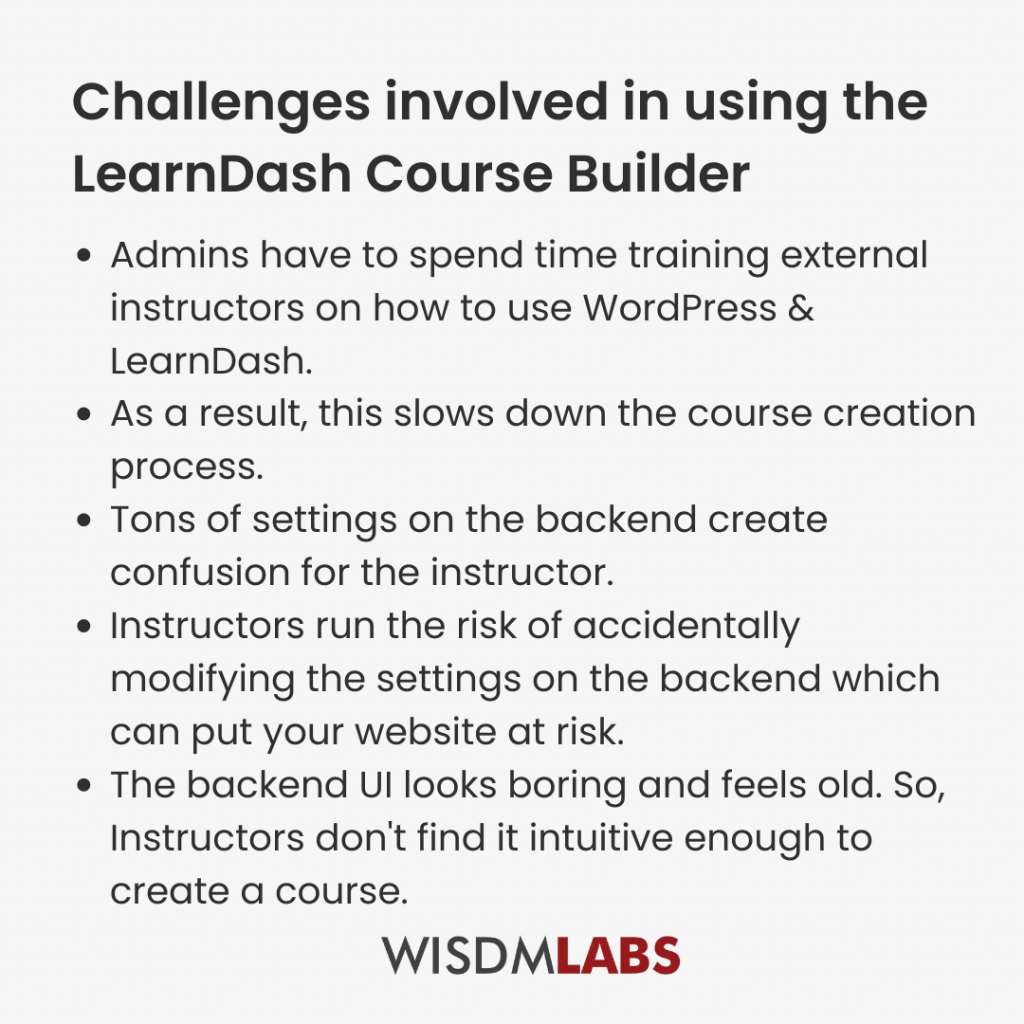The best content in the world loses its efficiency if it’s not structured properly.
That’s why LearnDash, being the most user-friendly WordPress LMS plugin, offers course creators the flexibility to organize their courses into an easy-to-understand hierarchical format.
It helps you structure your courses into Course -> Section -> Lesson -> Topic.
Lessons in LearnDash are the place where you start building the actual course content. You can add text, images, video, audio, PDFs, and other types of third-party or embeddable content.
Additionally, you can add free sample lessons, timers, extra (bonus) materials, assignments, and more. Topics can be used when you have more course content. They basically help you create even more hierarchy and give you one additional level of organization.
Hence, organizing your course into LearnDash lessons and topics helps make courses easier to understand and more effective as well.
Not only this – but you can also drip-feed content, embed videos, audio, PDFs, etc., and set prerequisites or required lessons to keep learners on track.
Therefore, using the LearnDash course builder you can easily add LearnDash lessons and topics to a course.
But there’s one challenge, you have to navigate through the backend WordPress panel in order to access the traditional LearnDash course builder.
Now, why is that a challenge?
Let’s find out…
The Frontend Dashboard

The new front end dashboard in LearnDash becomes an important instrument which is going to be pivotal for instructors and admin in the world of online learning. This revolutionary platform allows to have direct access to LearnDash abilities and functions from the frontend of the website, thus making them more convenient. A considerable revelation, particularly to the followers of LearnDash lessons and subjects, LearnDash frontend course creator, and the Instructor Role for LearnDash plugin.
The Frontend Dashboard Advantage
In the past, the management of online courses usually involved the management of backend access of which could be limiting and difficult. It changes this picture. It eliminates the need for backend access, thus providing a more straightforward and user-friendly way of course management. This improvement especially is beneficial to LearnDash lesson and topic users. It improves the accessibility of course management and simplifies it, and it works well with the LearnDash frontend course creator and the Instructor Role for LearnDash plugin.
It will change course management in that it will provide a Gutenberg block-based, customizable interface with several features, such an overview of courses and learners, a frontend course creator (for courses, and quizzes), tabs to manage WooCommerce products, and instructor commissions, specialized blocks to deal with assignments, essays, comments, direct access to quiz attempts, personal, and payment information settings, and soon to incorporate additional LearnDash and Instructor Role functionalities.
Disadvantages of using the LearnDash course builder
When you’re running an online course business with multiple course creators, allowing all of them to access the LearnDash course builder can be a bit overwhelming since it involves navigating via the backend WordPress settings.
- If instructors are not WordPress or LearnDash savvy, then as an admin you’d have to spend extra time training your instructors on how to use the course builder in order to create a course, lesson, topic, or quiz.
- This eventually leads to a delay in the course creation process which then leads to a delay in making the course live.
- Moreover, all the settings and options available at the backend create confusion for the instructor. As the WP dashboard interface is not primarily designed for course creation.
- This can also decrease your website’s security as you’re running the risk of instructors accidentally modifying the backend WordPress settings.
- On top of this, The UI of the backend course builder is not intuitive enough. It looks and feels old and complicated to use. So, course creators might need some extra time to first get familiar with the interface and then build a course.
But what if there was a way to speed up the process? Well, fortunately, there’s one solution.
You can bring in a frontend course builder to make it super simple for instructors to create a course without navigating to the backend.
Adding a LearnDash Lessons and Topics using a Frontend Course Creator
Frontend course creator dashboard is very helpful for instructors who want to add new LearnDash lessons and topics to their LearnDash course easily. It helps them save time, reduces the annoyance, and gives the opportunity to focus on the creation of the good-quality content that will attract and teach new learners.
Here are some ways in which a frontend course creator can help:
- Simplified interface: It gives the instructor an uncomplicated navigable interface so that they can add new content to their LearnDash course with ease without having to wade through a confusing backend interface.
- Drag-and-drop functionality: Drag and drop functionality is offered within it, making it easy for instructors to rearrange LearnDash lessons and topics within their course. It saves Instructors a lot of time in comparison to moving each individual item manually.
- Real-time preview: It enables the instructor to see the course he or she is creating in a real time. This will allow them to make changes fast and see how they will look before they publish the course.
- Bulk editing: It provides instructors with an opportunity to edit several lessons or topics at the same time thereby sparing time and effort.
- User-friendly media management: Instructor-friendly media management system is also available in it. Instructors should just upload and add media files (images, videos, etc.) instead of purportedly search for them through media library. You can also use a video compressor for pre-uploading optimization, which helps perfect the quality of video for playback and optimize storage space.
Also Read: How a frontend course creator can help easily edit course categories in LearnDash?
Does your LMS have a Frontend Course Creator?
In LearnDash you can use the Instructor Role. In the latest version, frontend templates have been included, together with the new course builder and quiz builder modules to enable course developers to create courses, topics, and quizzes without the need of accessing the LMS backend.
The front-end course creator is similar by properties to the back-end LearnDash Course Builder that allow you to develop a course in under 30 minutes with lessons, topics and quizzes.
So try out the new frontend course creator in the Instructor Role for LearnDash plugin.
And let your instructors experience a faster way to create courses. You can also check out this blog to learn more about it.
So that’s it for today! I hope this article was helpful.
See you next time!
Read More:
1. Instructor Role for LearnDash: The ultimate instructor dashboard for frontend course creation
2. How a frontend course creator can help easily edit course categories in LearnDash?
3. How a frontend course grow your LearnDash eLearning business?

